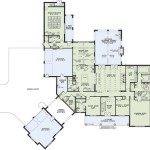Section 8 Duplexes: Understanding 2-Bedroom Options for Affordable Housing
The Section 8 Housing Choice Voucher Program, administered by the U.S. Department of Housing and Urban Development (HUD), provides rental assistance to low-income individuals and families, enabling them to afford safe and sanitary housing in the private market. Among the various types of properties eligible under the program, duplexes represent a significant portion, offering a viable housing option for beneficiaries. Two-bedroom duplexes, in particular, are highly sought after due to their size and practicality for small families and individuals seeking more space.
This article delves into the intricacies of Section 8 duplexes, focusing specifically on 2-bedroom units. It will examine the eligibility requirements for both tenants and landlords, the process of finding and securing a suitable duplex, the responsibilities of both parties involved, and some of the challenges and opportunities associated with this type of housing arrangement. Understanding these aspects is crucial for both prospective renters and property owners considering participation in the Section 8 program.
Eligibility and Requirements for Tenants
To qualify for Section 8 assistance, applicants must meet certain income and eligibility requirements established by HUD and the local Public Housing Agency (PHA). Income limits vary by location and household size, but generally, applicants must have an income at or below 50% of the area median income (AMI). In some cases, preference is given to individuals and families with incomes at or below 30% of the AMI.
Beyond income, other eligibility factors include U.S. citizenship or eligible immigration status, a clean criminal record (free of drug-related or violent offenses), and a history of responsible tenancy. The PHA will conduct thorough background checks to verify this information before approving an applicant for the program. Prior evictions or a history of property damage can significantly hinder an applicant's chances of receiving a voucher.
Once an applicant is approved, they will receive a Housing Choice Voucher. This voucher specifies the maximum rent the PHA will cover, based on the family size and the applicable payment standard for the area. The payment standard is determined by HUD and reflects the cost of modest housing in a particular geographic region. The tenant is responsible for finding a suitable rental unit, including a 2-bedroom duplex, within the approved payment standard.
It's important to note that the tenant's portion of the rent is typically capped at 30% of their adjusted gross income. This means that even if the rent for a 2-bedroom duplex exceeds the payment standard, the tenant will only pay a percentage of their income, with the PHA covering the remaining portion, up to the maximum allowed by the voucher.
Finding and Securing a 2-Bedroom Duplex
Locating available 2-bedroom duplexes that accept Section 8 vouchers can be challenging. Landlords are not legally obligated to participate in the program in most jurisdictions, leading to a limited supply of available units. Furthermore, some landlords may have negative perceptions about Section 8 tenants, making it even more difficult for voucher holders to find suitable housing.
Several resources can aid voucher holders in their search. The PHA often maintains a list of participating landlords and available properties. Online housing portals and websites that specialize in affordable housing listings can also be valuable resources. Networking with community organizations and housing advocacy groups can provide additional leads and support.
When searching for a 2-bedroom duplex, it's crucial to consider factors beyond just the rent. The location of the property, its proximity to schools, transportation, and essential services, and the overall condition of the unit are all important considerations. Safety and security should also be a primary concern.
Once a suitable duplex is found, the tenant must submit a Request for Tenancy Approval (RFTA) to the PHA. This form includes information about the property, the landlord, and the proposed rent. The PHA will then inspect the unit to ensure it meets HUD's Housing Quality Standards (HQS). These standards cover various aspects of the property, including structural integrity, sanitation, safety, and accessibility.
If the unit passes inspection and the rent is deemed reasonable, the PHA will approve the RFTA and enter into a Housing Assistance Payments (HAP) contract with the landlord. This contract outlines the terms of the rental agreement, including the amount of rent the PHA will pay directly to the landlord each month.
Landlord Responsibilities and Considerations
Property owners who choose to participate in the Section 8 program play a crucial role in providing affordable housing to low-income individuals and families. Landlords benefit from guaranteed rental income, as the PHA covers a significant portion of the rent. This can reduce vacancy rates and provide a stable source of revenue.
However, participating in the Section 8 program also comes with certain responsibilities. Landlords must maintain the property in accordance with HUD's Housing Quality Standards, ensuring it is safe, sanitary, and well-maintained. Regular inspections are conducted by the PHA to verify compliance with these standards.
Landlords are also responsible for screening potential tenants, including Section 8 voucher holders, to ensure they are responsible and reliable. While the PHA conducts background checks, landlords can still perform their own screening to assess a tenant's suitability. This may include checking credit history, references from previous landlords, and employment verification.
It is important for landlords to understand the HAP contract and their obligations under the agreement. This includes adhering to fair housing laws, treating all tenants equally, and refraining from discrimination based on race, ethnicity, religion, gender, disability, or familial status. Landlords must also comply with lease termination procedures and eviction laws.
One potential challenge for landlords is the administrative burden associated with the Section 8 program. This includes completing paperwork, attending inspections, and communicating with the PHA. However, many landlords find that the benefits of guaranteed rental income outweigh these administrative challenges.
The rental amount for a Section 8 property must be comparable to similar units in the area. The PHA will determine if the rent is reasonable based on market data and comparable rental properties. Landlords cannot charge Section 8 tenants a higher rent than what they would charge non-Section 8 tenants for the same unit. Inflationary rent increases must be in line with local guidelines and approved by the PHA.
Some landlords may hesitate to participate in Section 8 due to concerns about potential damage to their property. However, many PHAs offer programs to mitigate this risk, such as security deposit assistance and damage claim funds. These programs can provide landlords with financial protection against property damage caused by Section 8 tenants.
Ultimately, participating in the Section 8 program can be a mutually beneficial arrangement for both tenants and landlords. It provides affordable housing options for low-income individuals and families while offering landlords a stable and reliable source of rental income. While there are challenges associated with the program, understanding the requirements and responsibilities of both parties can lead to successful and sustainable housing partnerships.
Challenges and Opportunities in the Section 8 Housing Market
The Section 8 housing market faces several challenges, including a shortage of available units, particularly in high-opportunity areas. Discrimination against voucher holders remains a persistent problem, limiting their housing choices and perpetuating segregation. The administrative burden associated with the program can be cumbersome for both tenants and landlords.
However, there are also significant opportunities to improve the Section 8 program and expand access to affordable housing. Increased collaboration between PHAs, landlords, and community organizations can help address the shortage of available units and reduce discrimination. Streamlining the administrative processes and providing better support services to both tenants and landlords can make the program more efficient and effective.
Investing in the development and rehabilitation of affordable housing is crucial to expanding the supply of Section 8 eligible units. Incentives for landlords to participate in the program, such as tax credits and grants, can encourage more property owners to offer their units to voucher holders. Promoting fair housing practices and enforcing anti-discrimination laws can help ensure that voucher holders have equal access to housing opportunities.
Furthermore, providing supportive services to Section 8 tenants can help them succeed in their housing and achieve self-sufficiency. These services may include job training, financial literacy education, and case management. By addressing the underlying challenges that contribute to poverty and housing instability, the Section 8 program can be even more effective in helping low-income individuals and families achieve long-term housing security.
Addressing NIMBYism ("Not In My Backyard") is also crucial. Overcoming community resistance to affordable housing developments requires education and outreach to dispel myths and misconceptions about Section 8 tenants. Highlighting the benefits of affordable housing, such as increased economic diversity and improved community stability, can help build support for new developments.
The Section 8 program is a vital tool for addressing the affordable housing crisis in the United States. By understanding the complexities of the program and working collaboratively to overcome the challenges, it is possible to expand access to safe, affordable, and quality housing for all Americans, including those seeking 2-bedroom duplexes under the Section 8 program.

Renovated 2 Bedroom Duplex Section 8 Ok 2547 Miles St Augusta Ga 30906 Apartment Finder

2 Bedroom House Section 8 Ok Rental In Fort Wayne Forrent Com

Section 8 Approved Updated 2bed 1bath In House Rental St Louis Mo Forrent Com

All Electric 2 Bedroom Duplex Section 8 Ok House Rental In Augusta Ga Forrent Com

2 Bedroom Section 8 Rental Properties In Columbia Sc Affordablehousing Com

2 Bedroom Section 8 Houses For Rent In Memphis Tn Affordablehousing Com

2 Bedroom Section 8 Rental Properties In Birmingham Al Affordablehousing Com

Riviera Beach And West Palm Apartments Studio 2 Bedroom Section 8 Rentals

2 Bedroom 1 Bath Duplex In Prescott Valley Section 8 Accepted Apts Housing For Rent Apartment Craigslist

Section 8 Investor Buy 3 Bedroom Or 2 Houses Tenant Voucher Sizes








